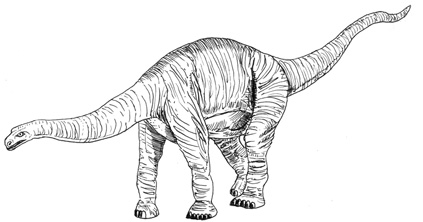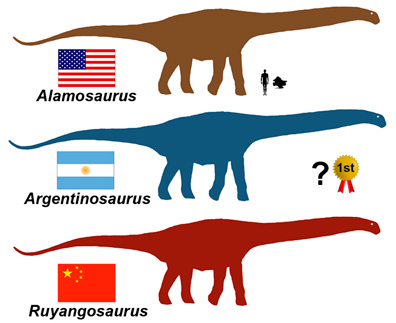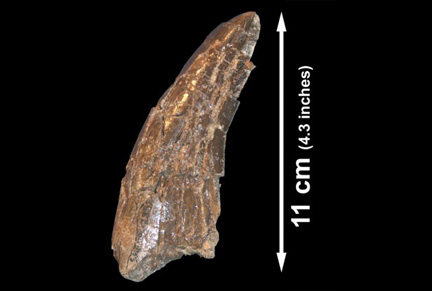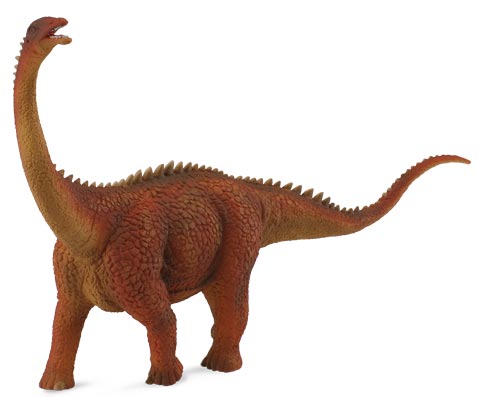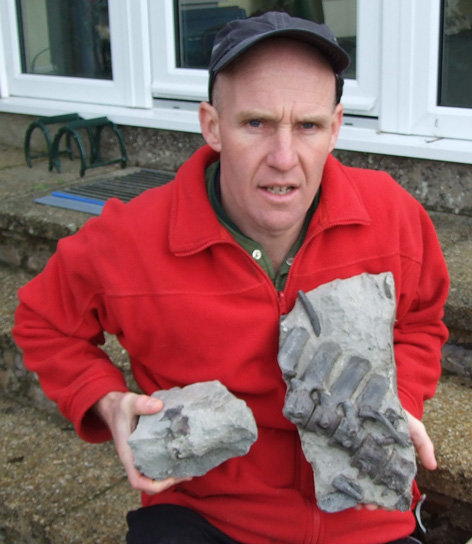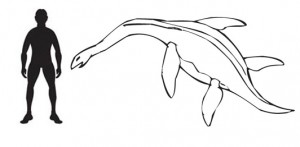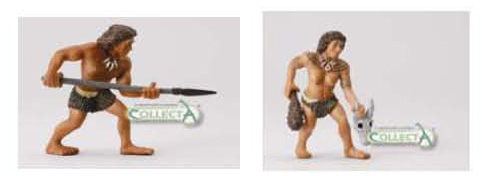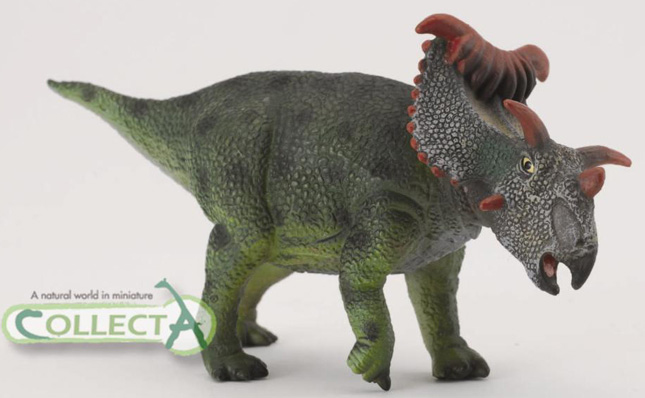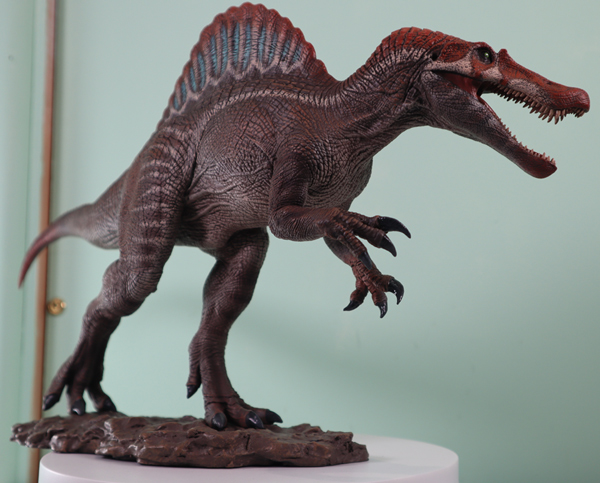Dromaeosaurs with their Killer Claws Yield New Theory on the Origin of Flight
Scenes from the trilogy of Jurassic Park movies where large dromaeosaurs allegedly Velociraptors, attack people with their sickle-like, second toe claws will have to be re-shot as new research from Montana State University’s Museum of the Rockies provides a new angle on the use of those killer claws.
Claws to Hold Prey
The research team have postulated that the use of the claws to hold prey rather than kill prey, led to these meat-eaters evolving a flapping motion with their arms to help keep them stable as they struggled with their victims. This could have led to the evolution of powered flight.
In a paper published this month, in the on line scientific journal PLoS ONE (public library of science) researchers Denver W. Fowler, Elizabeth A. Freedman and John B. Scannella along with Robert E. Kambic (Brown University in Rhode Island), describe how comparing modern raptors helped develop a new behaviour model for dromaeosaurs.
A Model of a Typical Dromaeosaurid (Schleich Velociraptor)

Velociraptor dinosaur model from Schleich. New research changes perceptions about dromaeosaurids. Picture credit: Everything Dinosaur.
Picture credit: Everything Dinosaur
Lead author Fowler commented:
“This study is a real game-changer. It completely overhauls our perception of these little predatory dinosaurs, changing the way we think about their ecology and evolution.”
The study focuses on dromaeosaurids; a group of small predatory dinosaurs that include the famous Velociraptor and its larger relative, the man-sized Deinonychus. The Jurassic Park movie “raptors” supposedly Velociraptors were far too large when depicted on the screen to represent the likes of Velociraptor mongoliensis. Instead, the animals in the film were a better representation of Deinonychus antirrhopus. Dromaeosaurids are closely related to birds, and are most famous for possessing an enlarged sickle-claw on digit two (inside toe) of the foot.
Previous researchers suggested that this claw was used to slash at prey, or help climb up their hides, to gain a purchase on large prey but the new study proposes a different type of behaviour.
Fowler said:
“Modern hawks and eagles possess a similar enlarged claw on their digit 2’s, something that hadn’t been noted before we published on it back in 2009. We showed that the enlarged D-2 claws are used as anchors, latching into the prey, preventing their escape. We interpret the sickle claw of dromaeosaurids as having evolved to do the same thing – latching in, and holding on.”
As in modern birds of prey, precise use of the claw is related to relative prey size.
Fowler went onto add:
“This strategy is only really needed for prey that are about the same size as the predator; large enough that they might struggle and escape from the feet. Smaller prey are just squeezed to death, but with large prey all the predator can do is hold on and stop it from escaping, then basically just eat it alive. Dromaeosaurs lack any obvious adaptations for dispatching their victims, so just like hawks and eagles, they probably ate their prey alive too.”
Dromaeosaurids
A spokesperson from Everything Dinosaur, stated that watching carnivorous dinosaurs attacking and killing prey would have been a horrific experience, these predators probably started to eat their victims when the prey was still alive. If this is stomach churning, then it has to placed in context, that cuddly labrador that shares many people’s homes is in fact descended from wolves which when attacking large animals do start to eat their fill before the animal has expired in many cases.
“Flapping First” Velociraptors may shed New Light on Origins of Flight
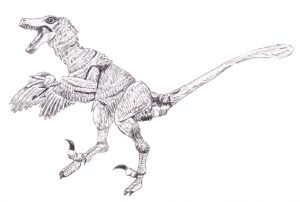
A drawing of Velociraptor osmolskae. Dromaeosaurids with their “killing-claws” shed light on the origins of powered flight amongst the Theropoda.
Picture credit: Everything Dinosaur.
The picture (above) is an illustration of a dromaeosaurid from the Beasts of the Mesozoic range of articulated dinosaur figures.
To view this range: Beasts of the Mesozoic Articulated Dinosaur Figures.
Other features of bird of prey feet gave the research team clues as to the functional anatomy of their ancient relatives, toe proportions of dromaeosaurids seemed more suited for grasping than running, and the metatarsus (bones between the ankles and the toes) shows adaptations for strength rather than speed.
Fowler stated:
“Unlike humans, most dinosaurs and birds only walk on their toes, so the metatarsus forms part of the leg itself. A long metatarsus lets you take bigger strides to run faster; but in dromaeosaurids, the metatarsus is very short, which is odd.”
Fowler thinks that this indicates that Velociraptor and its kin were adapted for a strategy other than simply running after prey.
He continued:
“When we look at modern birds of prey, a relatively short metatarsus is one feature that gives the bird additional strength in its feet. Velociraptor and Deinonychus also have a very short, stout metatarsus, suggesting that they had great strength but wouldn’t have been very fast runners.”
The ecological implications become especially interesting when dromaeosaurids are contrasted with their closest relatives: a very similar group of small carnivorous dinosaurs called troodontids.
“Troodontids and dromaeosaurids started out looking very similar, but over about 60 million years they evolved in opposite directions, adapting to different niches. Dromaeosaurids evolved towards stronger, slower feet; suggesting a stealthy ambush predatory strategy, adapted for relatively large prey. By contrast, troodontids evolved a longer metatarsus for speed and a more precise, but weaker grip, suggesting they were swift but probably took relatively smaller prey.”
The study also has implications for the next closest relatives of troodontids and dromaeosaurids – the birds (Aves). An important step in the origin of modern birds was the evolution of the perching foot.
Fowler said:
“A grasping foot is present in the closest relatives of birds, but also in the earliest birds like Archaeopteryx. We suggest that this originally evolved for predation, but would also have been available for use in perching. This is what we call ‘exaptation:’ a structure evolved originally for one purpose that can later be appropriated for a different use.”
The new study proposes that a similar mechanism may be responsible for the evolution of flight.
Fowler went onto state:
“When a modern hawk has latched its enlarged claws into its prey, it can no longer use the feet for stabilization and positioning. Instead the predator flaps its wings so that the prey stays underneath its feet, where it can be pinned down by the predator’s body-weight.”
The researchers suggest that this “stability flapping” uses less energy than flight, making it an intermediate flapping behaviour that may be key to understanding how flight evolved.
The research team stated:
“The predator’s flapping just maintains its position, and does not need to be as powerful or vigorous as full flight would require. Get on top, stay on top; it’s not trying to fly away. We see fully formed wings in exquisitely preserved dromaeosaurid fossils, and from biomechanical studies we can show that they were also able to perform a rudimentary flapping stroke. Most researchers think that they weren’t powerful enough to fly; we propose that the less demanding stability flapping would be a viable use for such a wing, and this behaviour would be consistent with the unusual adaptations of the feet.”
Flapping Behaviours
Another group of researchers has proposed that understanding flapping behaviours is key to understanding the evolution of flight, a view with which Fowler agrees:
“If we look at modern birds, we see flapping being used for all sorts of behaviours outside of flight. In our paper, we are formally proposing the ‘flapping first’ model: where flapping evolved for other behaviours first, and was only later exapted for flight by birds.”
The researchers believe their new ideas will open multiple new lines of investigation into dinosaur paleobiology, and the evolution of novel anatomical structures.
Everything Dinosaur acknowledges the press release from Montana State University which has been most helpful in compiling this article.


